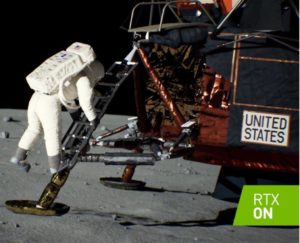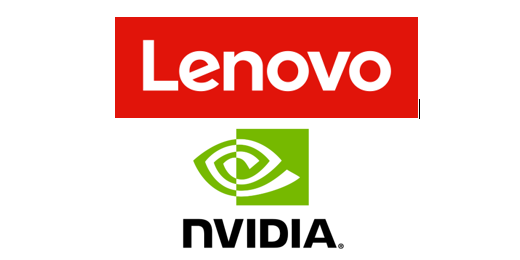 In this video, Apollo 11 astronaut Buzz Aldrin looks back at the first moon landing with help from a reenactment powered by NVIDIA RTX GPUs with real-time ray tracing technology.
In this video, Apollo 11 astronaut Buzz Aldrin looks back at the first moon landing with help from a reenactment powered by NVIDIA RTX GPUs with real-time ray tracing technology.
This week’s anniversary of the landing — one of mankind’s greatest achievements — has inspired us to dramatically step up our own work, enhancing our earlier moon-landing demo with RTX real-time ray tracing technology,” writes Rev Lebaredian from NVIDIA. “The result: a beautiful, near-cinematic depiction of one of history’s great moments. That’s thanks to NVIDIA RTX GPUs, which allowed our demo team to create an interactive visualization that incorporates light in the way it actually works, giving the scene uncanny realism.”
With RTX, each pixel on the screen is generated by tracing, in real time, the path of a beam of light backwards into the camera (your viewing point), picking up details from the objects it interacts. That allows artists to instantaneously see accurate reflections, soft shadows, global illumination and other visual phenomena. Prior to RTX technology, only special effects rendering farms working for hours or even days on a single scene in a movie could manage this level of realism. NVIDIA RTX technology changes all that, allowing creative professionals to mimic the way light behaves in the real world in interactive models, without the need to rely on pre-baked effects and cutscenes.
Now RTX real-time ray-tracing capabilities let them recreate how the sun’s rays, coming from behind the lander, bounced off the moon’s surface, how these rays interacted with the lunar lander to cast eerie lunar shadows, and even how the light bouncing from the lander and the moon’s surface interacted with the astronaut’s puffy space suits. The result captures the desolate, otherworldly landscape Armstrong and Aldrin experienced five decades ago.





